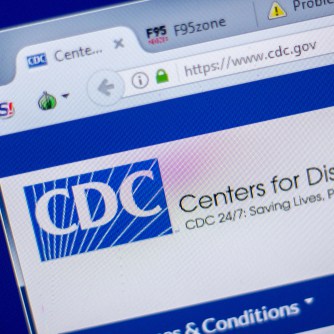The US Centers for Disease Control and Prevention (CDC) announced that sexually transmitted diseases (STDs) continued to increase during 2020, the first year of the COVID-19 pandemic. In 2020 the syphilis epidemic continued to surge, driving another year of increases in congenital syphilis. The agency notes that in 2020 the COVID-19 pandemic abruptly interrupted the world, and STD program resources were not spared as the nation shifted resources to help fight COVID-19. Many jurisdictions reported critical effects on staffing and testing and treatment supplies, straining “an already crumbling public health infrastructure.” Reduced screening at healthcare clinics, facility closures, shortages of STD test kits and lab supplies, health department staff shifts to COVID-19 work, delayed healthcare visits because of stay-at-home orders, increases in unemployment resulting in lapses of health insurance coverage for many, and increased use of telemedicine practices to treat symptomatic patients without confirmed lab test results were all cited as factors contributing to the initial decline in reported STD cases.
- The CDC reports that in 2020, 2.4 million cases of STDs were reported in the United States. The syphilis epidemic continued to surge, driving another year of increases in congenital syphilis: in 2020 more than 2,100 cases of congenital syphilis were reported, an increase of almost 15% since 2019 and a 235% increase since 2016.
- Gonorrhea and primary and secondary syphilis cases increased by 10% and 7%, respectively, from 2019 to 2020. In 2020 there were 149 stillbirths and infant deaths, “reflecting a startling 210% increase since 2016.” Forty-seven states reported at least one case of congenital syphilis in 2020, compared with only 24 states in 2011. The most commonly missed congenital syphilis opportunity occurred when mothers did not receive timely prenatal care or syphilis testing, the CDC states (41%). Parallel increases in primary and secondary syphilis among women 15 to 44 years of age by more than 156% from 2016 to 2020 further fueled this national trend. “Early 2021 data indicate that primary and secondary syphilis and congenital syphilis continued to increase, with congenital syphilis cases already surpassing 2020 counts,” the CDC notes.
- Reported cases of chlamydia declined 13%. However, CDC notes that chlamydial infections are usually asymptomatic and are identified through screening, so the decline in reported cases is likely due to decreases in STD screening and underdiagnosis during the pandemic rather than a reduction in new infections.
- The data show that some racial and ethnic minority groups, gay and bisexual men, and the nation’s youth continue to experience high rates of STDs.
The CDC reminds healthcare providers that we cannot wait for the pandemic to end. “There is much to be done to rebuild, innovate, and expand STD prevention in the US to close gaps and create lasting change. We must prioritize and focus our efforts to regain lost ground to control the spread of STDs. Despite many challenges, the field remains dedicated to the work by offering innovative solutions to meet people where they are.”






